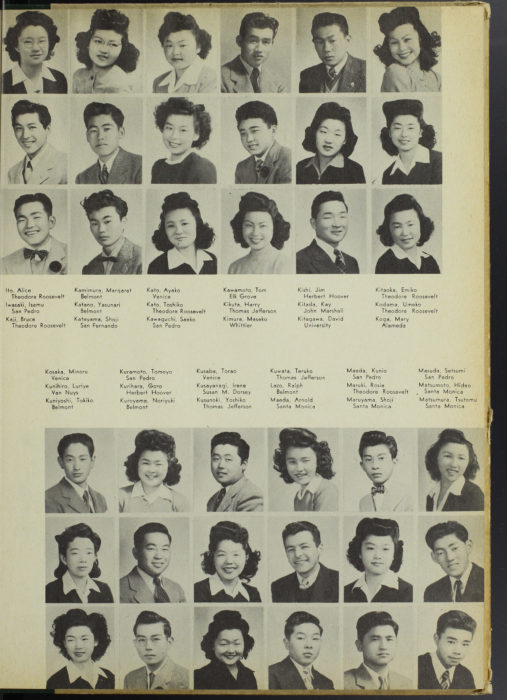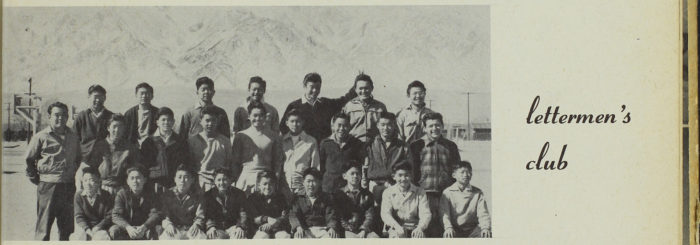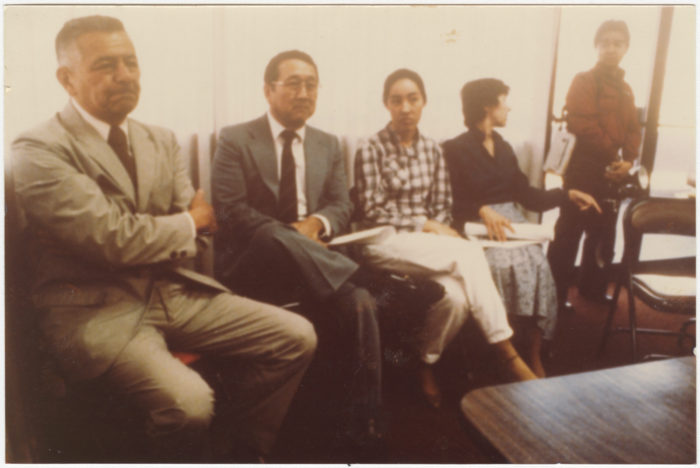
Japanese American National Museum, Gift of Helen Ely Brill (95.93.2)
This is a page from the 1944 Manzanar High School yearbook. Look carefully at these faces and names.
- What do you notice?
As one might expect, almost all of the students pictured in the yearbook are Japanese American. There is one student, however, who is not. Find the photograph of Ralph Lazo. Lazo is of Mexican and Irish descent.
- Why do you think he is pictured in this yearbook from Manzanar Concentration Camp?
- What events might have led to him living in Manzanar?



